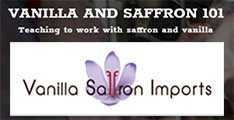Shonali Muthalaly. One small town: 17 Michelin stars. That’s one of the highest number of stars per square metre in the world (after Tokyo). And that’s not all.
If you don’t plan on spending around €200 (roughly about ₹16,000 on a meal), go out for pintxos, the culinary equivalent of Picasso on a plate. They pack the drama, style and flavour of Basque tradition into miniature courses. The bars are a charming fug of smoky meat, perfume and the sweetly acidic scent of cinder. Expect to find napkins soggy with olive oil, toothpicks and crumpled receipts underfoot. Pintxo bars are deliberately messy, so don’t feel guilty about tossing the toothpick that spears your gilda — a salty explosion of chilli peppers wrapped around an anchovy and olive — right under the bar, before ordering another sparkling txakoli, the flinty local wine. Total bill for both: €3. And that’s not all.
San Sebastian is home to the Basque Culinary Center set in a building designed to look like a stack of plates. It has more than a hundred txokos: all-male, secret gastronomic societies. It boasts high-quality produce, excellent cooking schools and talented chefs.
All reasons why the little town is rapidly becoming the gourmet capital of the world. Packed with posh tourists, San Sebastian is a deliciously chaotic vortex of tortillas, calamari and steamy croquettes. There’s a system: bar hop, eat standing up and move fast if you want to snag the best pintxos, which sell out well before the bars down their shutters at midnight.
A bit of both
There are hundreds of pintxos bars, veering between staunchly traditional and edgy modernist cuisine. However, the same names seem to crop up on ‘must visit’ lists. Trendy Bar Zeruko, famous for thinly-sliced cod served over a smoking rosemary twig. Borda Berri, known for modern Basque cooking, where the creamy mushroom risotto sells out in a couple of hours. A Fuego Negro with hip, cheeky food, including a Makobe mini burger, with perfectly seared wagyu beef. Eat crunchy, battered scampi at Paco Bueno and fried white asparagus at Ganbara. Then, end the night at La Vina, with freshly-baked cheesecake: caramelised on the sides and languidly wobbly in the middle.
Gourmet expeditions should begin in the sprawling local market, Mercado de la Bretxa, where Inigo Ansa of Go Local (which runs walking tours) dives into the produce section, instructing his clients to “Be like penguins... Small as possible,” to avoid disturbing shoppers. Chatting with the fish vendors, he says, “They tell us what is in season, and how to cook it. When you go to a supermarket, you can’t speak to the fridge. This is how everyone should shop.”
There are suspended legs of ham, salted and dried for 42 months. The butcher holds up samples of thinly-sliced Jamon Ibérico, from black-hooved pigs fed on acorns, which sells for €155 a kilo. Richly marbled with melt-in-the-mouth fat, it’s faintly nutty. There’s canned tuna, from the belly of the fish.
“Serve it over slices of ripe tomato, add baby onion and olive oil,” says Inigo dreamily. “With crusty bread, it’s a meal for a king.”
At MIMO cooking school, set in the town’s most glamorous hotel, the historic Maria Cristina, Jon Warren and Marti Kilpatrick chat about what draws people to San Sebastian despite the fact that it is Spain’s most expensive destination. “Even as a backpacker, you can have a good meal here... because the locals and chefs really care about the food and the produce,” says Kilpatrick, adding, “The bar owners are there from the time they open till they close. They take pride in their work.”
MIMO runs myriad classes: teaching everything from ‘Michelin Star secrets’ to hosting a seven-day ‘culinary cornucopia’ course priced at €1,100. Students are primarily American, Australian and British, though they are seeing more and more Japanese.
The main rules of Basque cooking? “Keep it simple,” says Warren. “We have amazing fish and meat. Anchovies, which come fresh from the sea just need to be fried with olive oil and salted.” He says buyers are willing to pay upto €1000 a kilo for the guisante lágrima (or tear-shaped peas), which have a distinctive herbaceous sweetness. Angulas, or baby eels, typically eaten with just garlic and oil, are coveted, with gourmands paying €200 for a small portion. Another local favourite is kokotxa, which Warren describes as the chin of the hake fish. “It’s gelatinous. Cooked in a sauce of olive oil, it becomes like an emulsion.”
Drawing from tradition
Chef Agustin Araquistain, who teaches at MIMO and was born in San Sebastián, says he learnt to cook from his grandmother. “Very simple, humble vegetables like leeks, carrots, onion and garlic,” he says, adding, “We lived off the land. My dad was an industrial mechanic and my mom cleaned houses. We had a big vegetable garden, as well as cows, pigs and chickens. Breakfast, served at 5 am, was fried eggs and potatoes. For lunch, we would eat chicken and vegetables. Or beef. Occasionally fish. Usually salted cod.”
San Sebastian clearly takes food seriously. The town has about 120 secret gastronomic societies where members gather to cook together. Chef Araquistain says, “The old ones are all male. You need to be recommended by two members... I applied to get into one four years ago and have to wait for two more.”
Why is it so important? “Cooking is part of our culture. We don’t hang out in living rooms here. I grew up in the kitchen. Food is festivity.” There’s a palpable pride in tradition. Local chefs trained in Europe returned with nouvelle cuisine and found ways to marry these ideas with local produce. “Our fishermen cook meals on the boats, that’s how kokotxa began,” Chef Araquistain says, adding with a grin, “Now, it’s a Michelin-starred delicacy!”



 Lagun bati bidali
Lagun bati bidali Komentarioa gehitu
Komentarioa gehitu








